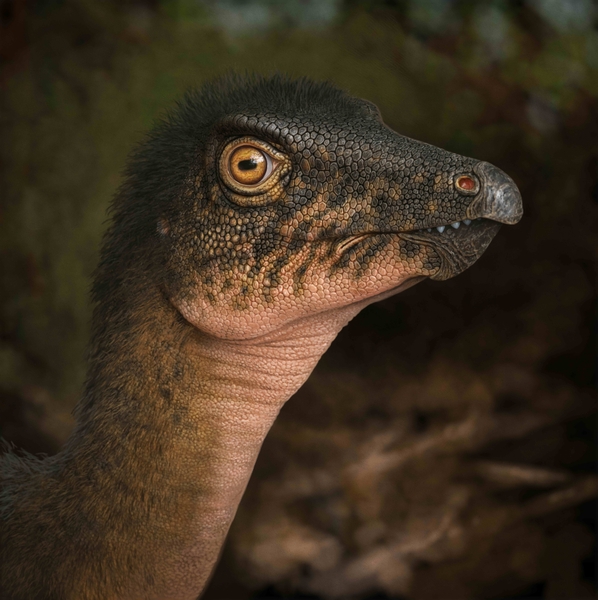A major dinosaur discovery—right in our parking lot
The Denver Museum of Nature & Science has made another incredible dinosaur discovery — this time right beneath our very own parking lot! In January 2025, the Museum conducted a geothermal test drilling project to assess the viability of transitioning from natural gas to geothermal energy, and at the same time, carried out a scientific coring research initiative to better understand the geology of the Denver Basin. While drilling more than 763 feet below our Museum parking lot, our team uncovered part of a 67.5-million-year-old dinosaur bone—the deepest and oldest fossil ever discovered within Denver city limits. This partial vertebra from a plant-eating dinosaur offers an extraordinary glimpse into prehistoric life and highlights what happens when science, sustainability, and curiosity collide.
A partial fossilized dinosaur vertebra
A partial fossilized dinosaur vertebra was found in a deep geologic core sample taken from beneath the Denver Museum of Nature & Science parking lot. It has been identified as a vertebral centrum — a central part of a dinosaur backbone— from an herbivorous ornithischian dinosaur, similar to animals such as Thescelosaurus or Edmontosaurus.

The top view of the portion of dinosaur bone recovered from the scientific core.

A side view of the portion of dinosaur bone recovered from the scientific core.

A side view of the portion of dinosaur bone recovered from the scientific core.

Partial dinosaur bone recovered from the scientific core — drilled 763 feet below the surface of the Museum’s parking lot. The specimen is housed at the Denver Museum of Nature & Science, courtesy of History Colorado, Office of the State Archaeologist.
a plant-eating ornithopod dinosaur
The partial bone took some time to study before the scientists felt confident that they were indeed looking at a real animal fossil. Embedded in a layer of rock formed during the Late Cretaceous Period, the scientists identified the fossil as part of a vertebra from a plant-eating dinosaur, similar to a Thescelosaurus or Edmontosaurus. Such creatures lived in present-day Denver in the years before the catastrophic asteroid impact that ended the age of dinosaurs.

Image of a plant-eating ornithopod dinosaur, Thescelosaurus during the latest Cretaceous Period, nearly 67 million years ago. These around 10-12 foot long two-legged animals roamed the tropical swamps, forests and floodplains where Denver now stands. Their vertebrae are similar to the one found in the rock core deep below the Museum.
The Work
The Museum conducted a geothermal test drilling project to assess the viability of transitioning from natural gas to geothermal energy, and at the same time, carried out a scientific coring research initiative to better understand the geology of the Denver Basin. The coring investigation led to the unexpected discovery of this dinosaur fossil.

The fossil was discovered during a scientific coring project conducted alongside a geothermal drilling project. Both drilling projects took place in coordination but had different goals — one for energy innovation, the other for geologic research. Both projects took place in the Museum's parking lot.

Shown here is the truck-mounted rotary coring rig that extracted the core from beneath the Museum parking lot.

Shown here are rock samples from beneath the parking lot at the Denver Museum of Nature & Science that were collected via a core drilling rig.

Earth Sciences Curator Dr. James Hagadorn and Research Associate Dr. Bob Raynolds examine scientific cores in the parking lot at the Denver Museum of Nature & Science in January, 2025.

Dr. Bob Raynolds examines the dinosaur fossil embedded in the scientific core sample.

From left to right, report authors Dr. Gussie Maccracken, Dr. David Krause and Dr. Patrick O'Connor study the dinosaur fossil at the Denver Museum of Nature & Science.